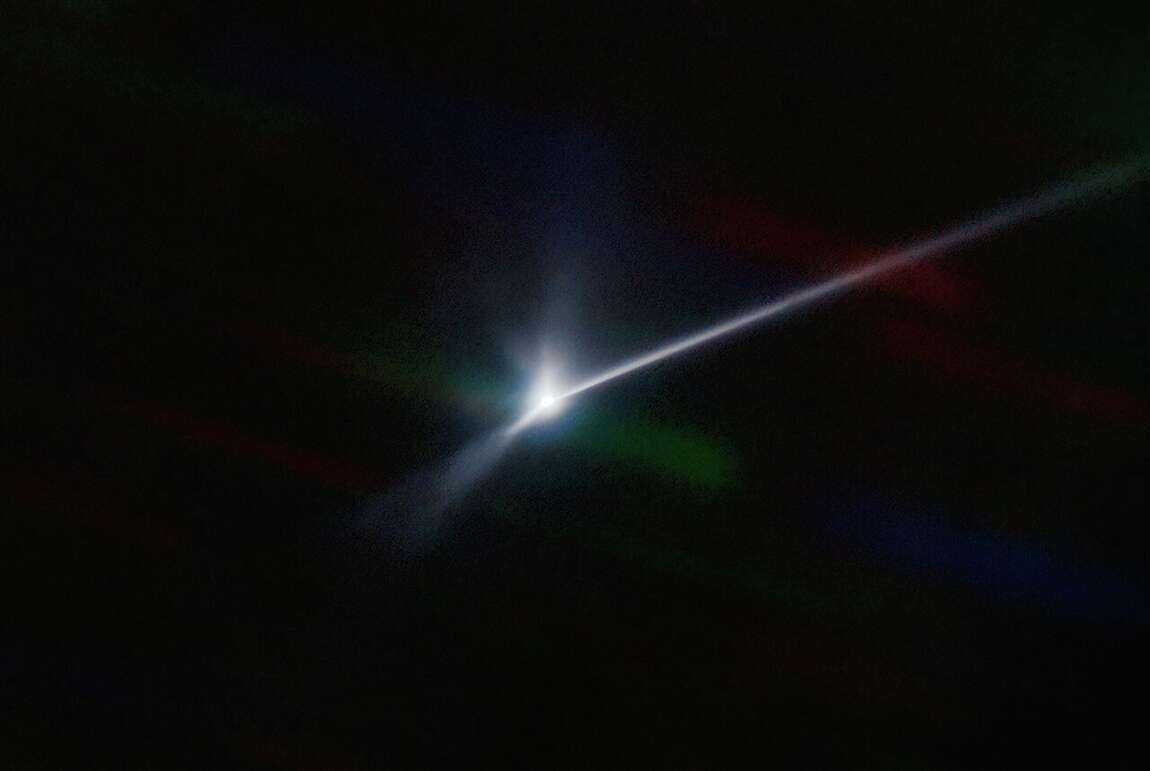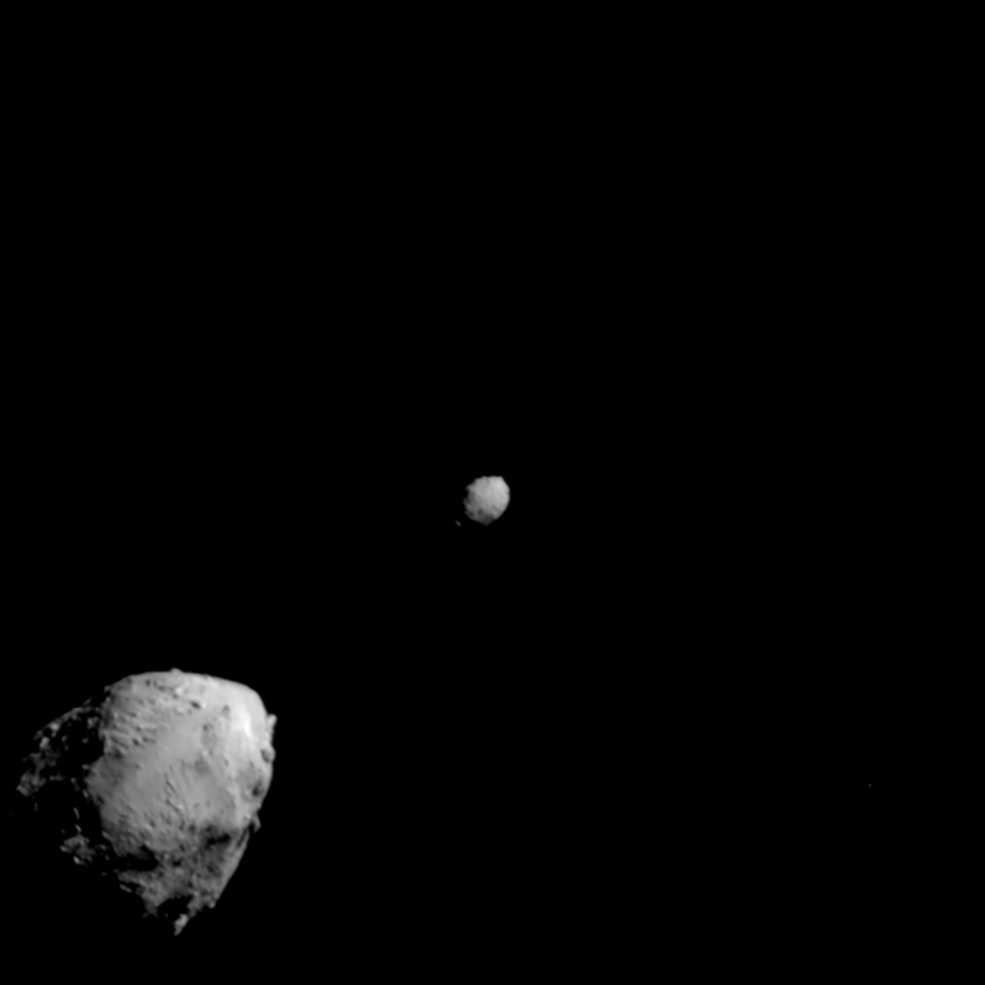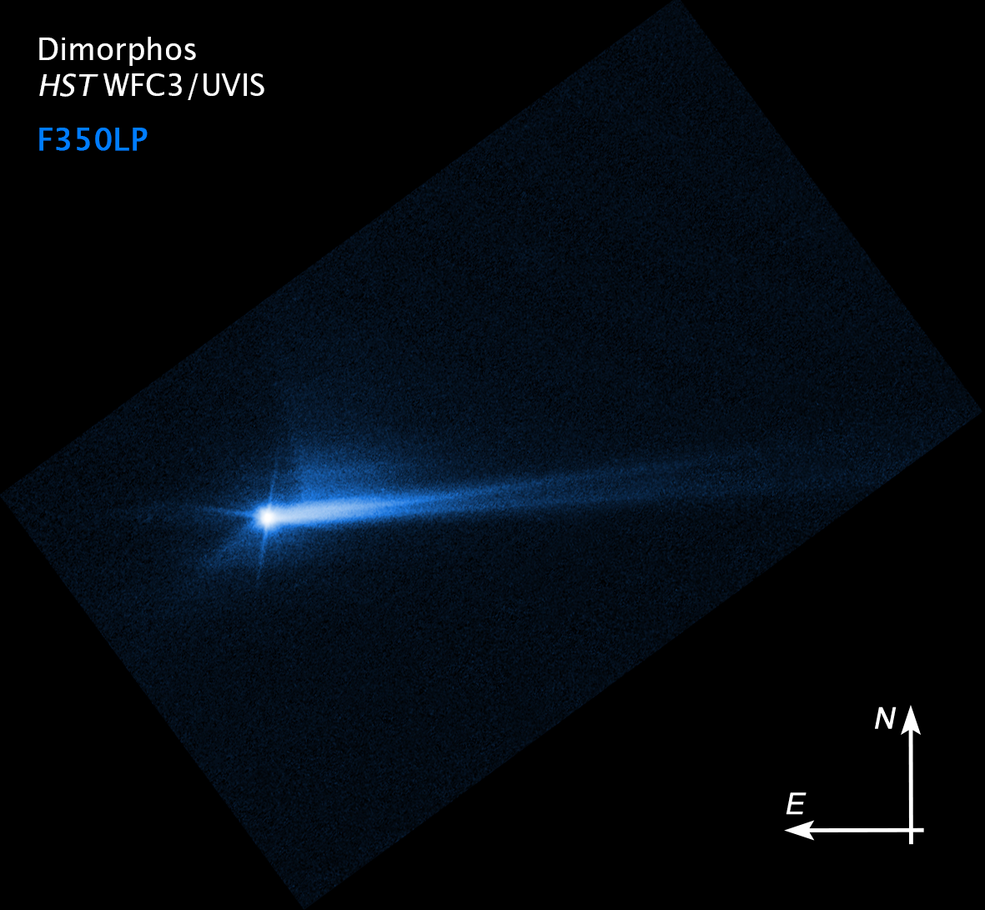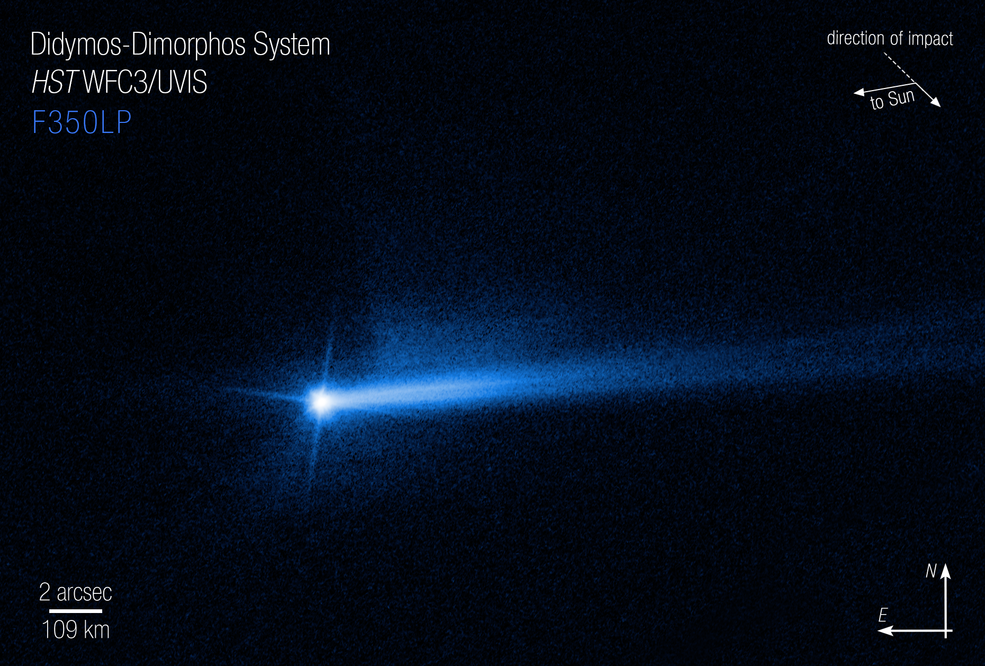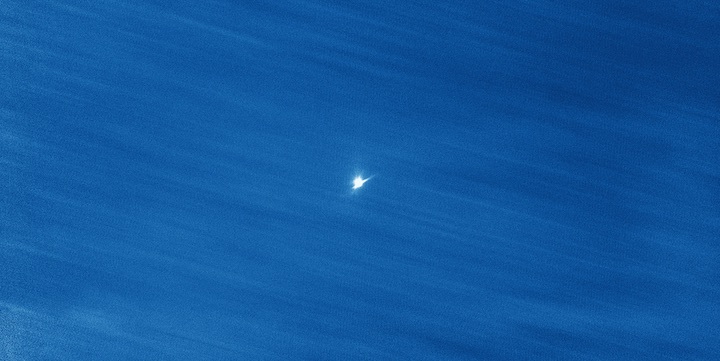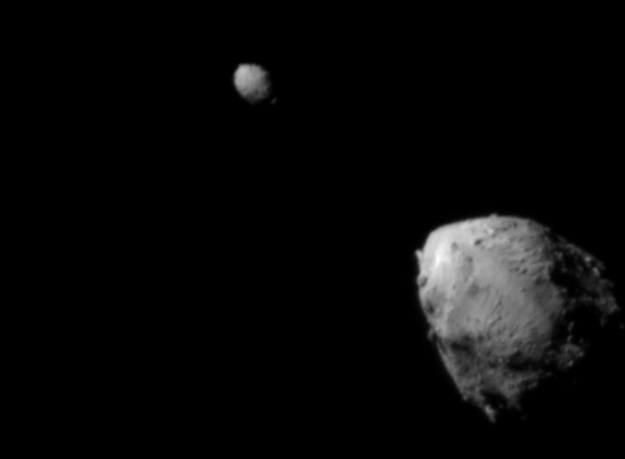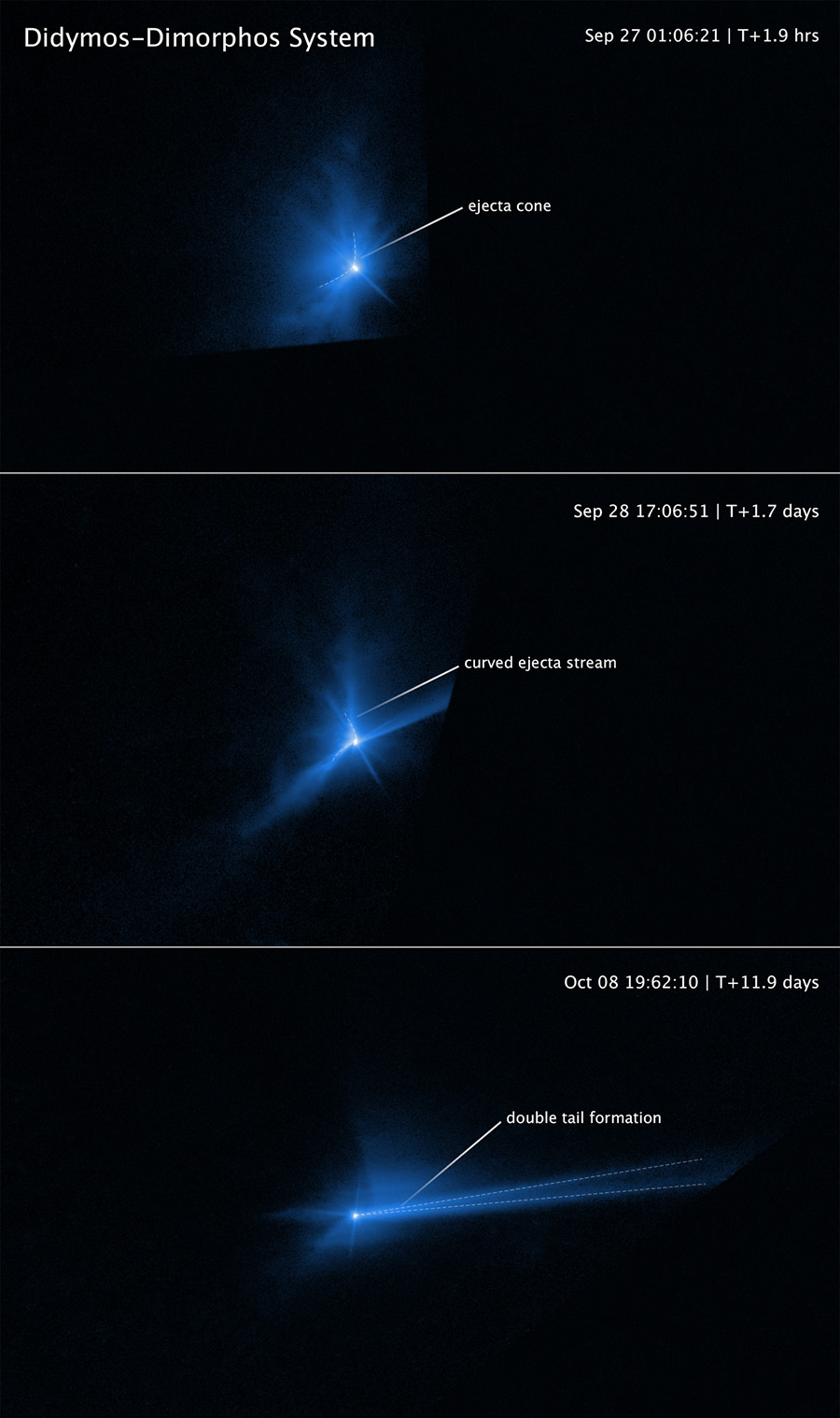Images from the first month after DART’s asteroid collision. Each frame is the average over an entire night’s observations. The Didymos asteroid system is in the centre and stars appear as streaks.Credit: University of Canterbury Ōtehīwai Mt John Observatory/UCNZ
Last September, NASA’s Double Asteroid Redirection Test (DART) spacecraft smashed into an asteroid, deliberately altering the rock’s trajectory through space in a first test of planetary defence. Now scientists have deconstructed the collision and its aftermath — and learnt just how successful humanity’s punch at the cosmos really was.
DART, which was the size of a golf cart, collided with a Great Pyramid-sized asteroid called Dimorphos. The impact caused the asteroid’s orbit around another space rock to shrink — Dimorphos now completes an orbit 33 minutes faster than before the impact, researchers report1 today in Nature. This means that if a dangerous asteroid were ever detected heading for Earth, a mission to smash into it would probably be able to divert it away from the planet.
DART’s success has been reported before; now, five studies in Nature describe the final moments of the crash and how it affected the asteroid. One group combined data on the spacecraft’s trajectory with photographs of the asteroid’s surface just before impact2. As DART hurtled towards Dimorphos at more than 6 kilometres per second, the first part that hit was one of its solar panels, which smashed into a 6.5-metre-wide boulder. Microseconds later, the main body of the spacecraft collided with the rocky surface next to the boulder — and the US$330-million DART shattered to bits.
The impact ejected at least one million kilograms of rock from Dimorphos’s 4.3-billion-kilogram mass. The debris formed a tail that stretched for tens of thousands of kilometres behind the asteroid. Various telescopes watched over weeks as the tail shifted and evolved under the pressure of the Sun’s rays; the Hubble Space Telescope even detected a second tail, which had disappeared by 18 days after the impact3.
Dimorphos is 151 metres wide and orbits the larger asteroid Didymos. NASA’s goal was to alter Dimorphos’s orbit enough for astronomers to spot the changes by monitoring the brightness of the pair over time using ground-based telescopes. Neither asteroid is, or will ever be, a threat to Earth.
Images taken as DART approached Dimorphos on 26 September show the asteroid looking like an egg covered in boulders. It seems to be a loose pile of rubble barely held together by gravity — whose surface would probably shatter spectacularly when DART hit it.
Crash test
The discovery of more details is helping researchers to understand why the impact was so successful in shunting the asteroid, says Carolyn Ernst, a planetary scientist at the Johns Hopkins University Applied Physics Laboratory in Laurel, Maryland.
One factor is that the spacecraft hit a spot around 25 metres from the asteroid’s centre, maximizing the force of its impact. Another is that large amounts of the asteroid’s rubble flew outwards from the impact. The recoil from this force pushed the asteroid further off its previous trajectory. Researchers estimate that this spray of rubble meant Dimorphos’ added momentum was almost four times that imparted by DART4.
Although NASA has demonstrated this technique on only one asteroid, the results could be broadly applicable to future hazards, researchers say. “It means that we can quickly design a mission to deflect an asteroid if there is a threat, and we know that this has a very high chance of being effective,” says Franck Marchis at the SETI Institute in Mountain View, California, who is also chief scientific officer at the telescope manufacturer Unistellar in Marseille.
“If you had asked me 30 years ago, ‘Can we be confident we won’t be wiped out by a giant killer asteroid a week from next Tuesday?’ I would have had to say no,” adds Tom Statler, DART’s programme scientist at NASA headquarters in Washington DC. Now that astronomers have surveyed the skies to identify nearly all the dangerous asteroids — and now that DART has been shown to work —“we will know what to do about it when something new is found”, he says.
Researchers are continuing to work through the DART data to learn more about the physics, chemistry and geology of both Dimorphos and Didymos. This work is being done with the help of a network of amateur astronomers co-led by Marchis. The network’s members observed the asteroids with their telescopes before, during and after the impact. They discovered that the rocks seemed to become significantly redder immediately after the spacecraft hit5.
A later colour change to blue was spotted by NASA’s Infrared Telescope Facility in Hawaii, as reported by Cristina Thomas, a planetary scientist at Northern Arizona University in Flagstaff, at a December meeting of the American Geophysical Union. “We think this is likely because we have a lot of material from Dimorphos thrown off,” she says. The impact blasted through the asteroid’s weathered interior and exposed part of its insides, making the asteroid appear temporarily blue, a few hours after impact.
Scientists will get a close-up view of the impact’s aftermath in late 2026, when a European Space Agency craft named Hera will arrive at Dimorphos. Researchers are keen to see what sort of impact crater the DART smash left behind. In the meantime, detailed scientific observations will continue for several weeks, until the movement of Didymos and Dimorphos away from Earth makes them too faint for many telescopes to see, and then takes them behind the Sun.
“It’s really thrilling to still be watching the evolution of what’s happening,” says Thomas.

